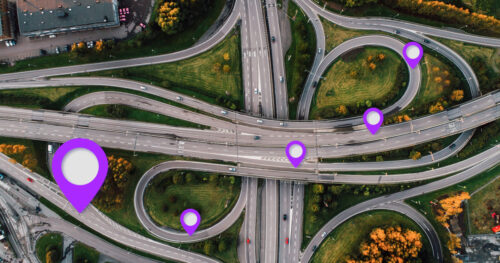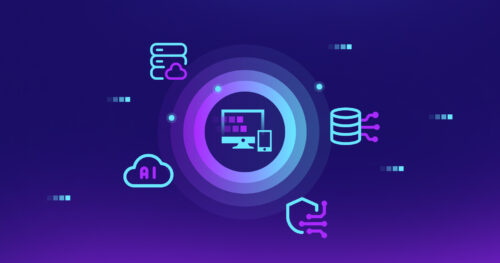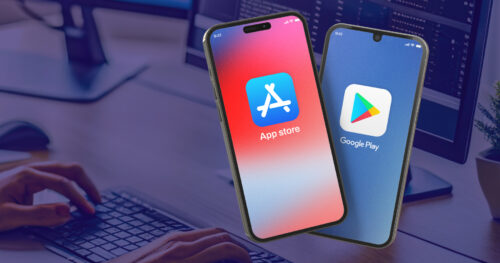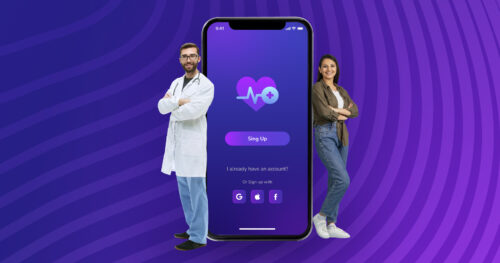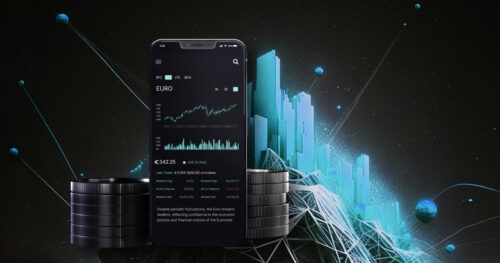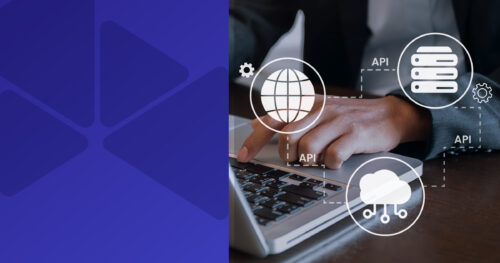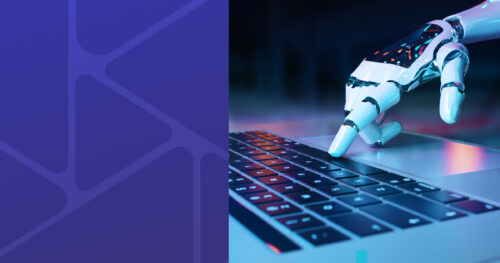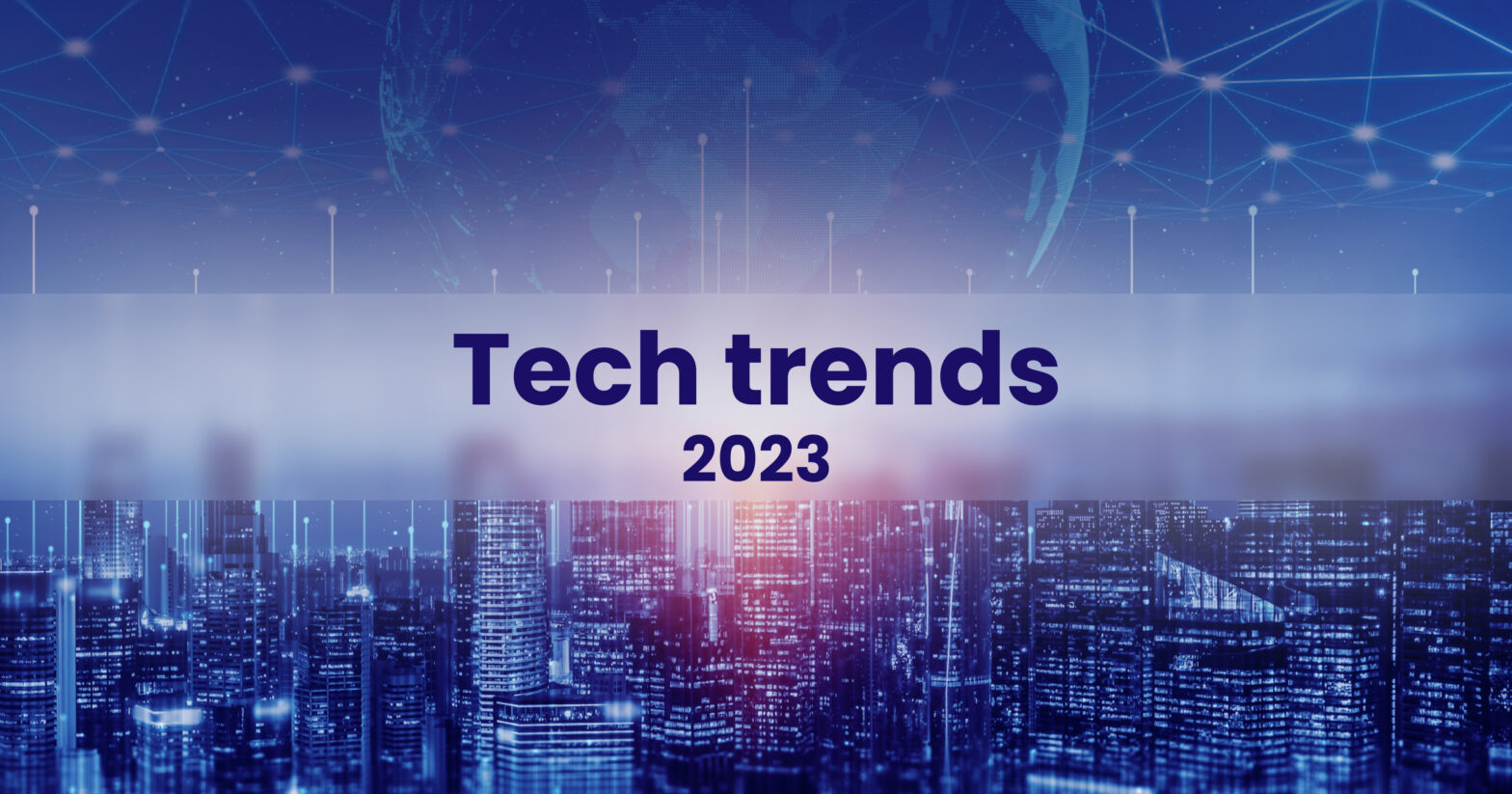The digital world is constantly evolving as new challenges emerge. It’s crucial to adapt to these changes. DigitalMara has collected a list of important tech trends for 2023 that encompass business solutions, user experience, web and mobile development. Among them are industry cloud platforms, autonomous systems, Metaverse, Web3, and the multi-experience trend.
Digital innovations and components are penetrating all industries and sectors, helping companies optimize resilience, scale operations and utilize data-driven decision-making. Companies are investing heavily in AI products that enhance their internal and external business processes, customer interactions and user experience. According to IDC, research spending on AI technology worldwide, both business and government, will reach $500 billion in 2023. The digital world is increasingly connecting with the real world, thanks to digital twin technology and 3D printing for many materials, with a wide range of applications. Industries ranging from manufacturing, automotive, and aviation, to energy, utilities, healthcare, logistics, and retail, adopt digital twins to enhance efficiency and productivity.
As more financial transactions, both business and personal, are going online, there is increased demand for digital trust. Here a re-architecture approach is being suggested, which means creating a decentralized network with coordinated ownership between entities and encryption for data transmission and storage. Blockchain can help to create new business models and new forms of digital ownership.
Businesses are using these advanced solutions to try to be sustainable. Gartner defines digital solutions as sustainable if they enable good environmental, social and governance outcomes both for the enterprise and customers. Automation, cloud technologies and AI can be part of that list.
Let’s take a look at our list of key trends in IT that will help to transform business and society and are worth paying attention to this coming year.
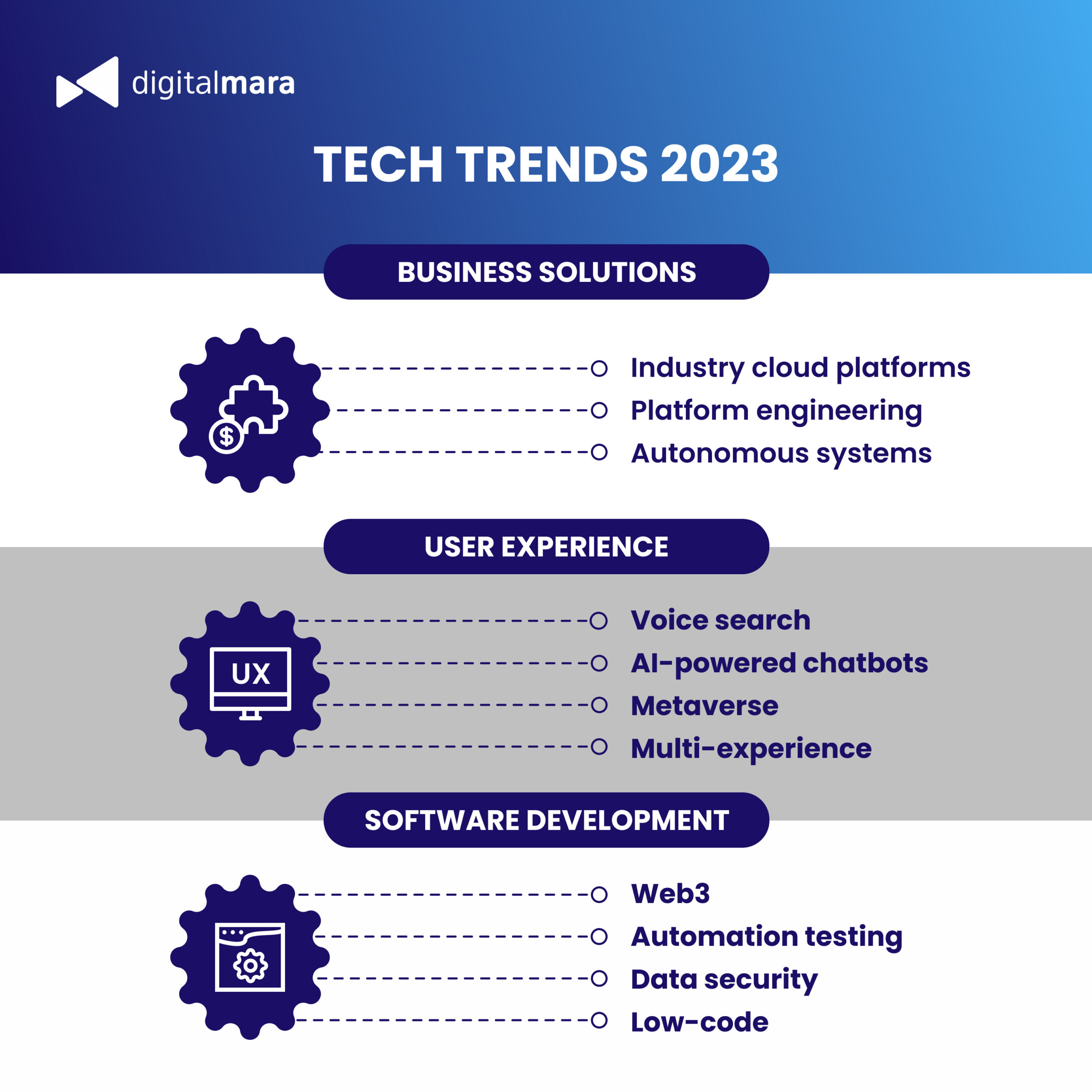
1) Business solutions tech trends
Industry cloud platforms
An industry cloud platform (ICP) is a combination of software, platform and Infrastructure as a Service, capable of supplying specific solutions for diverse industries. Gartner says many enterprises have already started to adopt an Industry cloud platform and are considering further deployment. By 2027, 40% of crucial business tasks will be solved with ICPs. Such an approach advances beyond the conventional cloud and brings additional value.
The ICP concept is primarily based on public cloud services but provides a more flexible approach to handle workloads and expedite changes to fit a specific business, data, compliance, or other needs of the industry segment. These platforms show greater performance and a better capability to cope with multilayer tasks. The instrumental package includes comprehensive business capabilities, industry-specific data structures and combinable tools.
Platform engineering
Platform engineering implements reusable and configurable components and services, a standard toolkit, self-service capabilities and automated processes. This approach allows developers to be more productive, improve the overall experience and speed up delivery time. Companies can benefit from process consistency and efficiency, while developers get manageable delivery pipelines and low-level infrastructure.
However, it’s important to note that a single platform is not universal and should be customized for each organization’s needs. The particular features of a platform depend completely on the demands of its customers, who may be developers, data processing specialists, or end users.
Autonomous systems
Companies are choosing a more rational approach based on resilience and efficiency. Autonomous systems can help to optimize processes through greater productivity, flexibility and data-driven insights. They cover a wide range of operations: delivery, logistics, manufacturing, vehicles, energy solutions, etc. These systems have complex architecture based on the number of digital tools required and are safe and reliable with real-time control.
Autonomous systems can adapt to changing conditions and make decisions independently, based on a wide range of integrated enterprise data gathered from IoT sensors, drones, AI systems, automated quality management, enterprise resource planning, customer relationship management and quality control systems. To develop such a system, you need the expertise of data scientists, systems engineers and programmers.
2) User experience trends
Voice search
The majority of modern devices have a voice recognition feature. According to Statista, the number of voice assistants in use will reach 8.3 million by 2024. Customers can use voice to communicate not only with their smartphones, but also through smart home devices and vehicles; this saves time and allows for multitasking. You should consider optimizing for voice commands on your websites and apps.
It’s an effective way to communicate with your customers, thanks to a fast response to their queries. Also, voice search should be borne in mind when building your marketing strategy, in particular SEO strategy.
AI-powered chatbots
AI empowers chatbots to offer a smarter and more human-like experience to customers. Thanks to Natural Language Processing and Machine Learning algorithms, AI chatbots are able to learn from previous conversations and provide more personalized communication. With behavioral analytics, you can adjust conversation flows. An automated translation function offers additional benefits. Chatbots can be integrated with messengers, websites and apps and enable 24/7 customer support.
The future of AI chatbots is not limited to customer service. They can be implemented within social apps just to make conversations for fun. More sophisticated bots might empower therapy and educational applications. Another use case is company internal processes, or as a part of employee service; for instance, HR bots, employee training, IT help and administrative assistance. Consumers often share personal information with chatbots. So, a priority of chatbot development should be ensuring users’ data security.
Metaverse
Metaverse is a new type of digital interaction with an immersive sense, whereby users get a kind of real-life experience in a virtual world. Mckinsey identifies 5 main customer activities possible in the Metaverse: social, entertainment, gaming, travel and shopping. We would add education to the list. Companies can employ it in marketing campaigns, or use it to arrange meetings, conferences and other events, conduct employee training and build digital-twin models.
Metaverse development combines several technologies: Artificial Intelligence, IoT, Virtual and Augmented reality, 3D modeling, distributed computing, microservices. and edge computing. With all that come some challenges. Infrastructure stability, security and data governance must be ensured. The environment must endure a heavy load, as thousands of people are interacting simultaneously and taking actions. And last, but not least, is the issue of ensuring compatibility across different platforms and devices.
However, not everything is so bright. The founder of the Metaverse-defining Meta company has already invested $100 billion over two years and lost $3.7 billion in the past three months. There are a number of reasons for this: poor sales of headsets, avatars that aren’t as good-looking as might be expected, an incomplete environment, absence of its own video games for VR, and loss of trust. Businesses that want to have meetings in the Metaverse have to equip their employees with special VR headsets, which is a huge investment.
Multi-experience
Users want to have the same smooth and engaging experience across multiple points of digital interaction. And that’s not restricted to computer, tablet or smartphone. Your software has to provide a connective experience across websites, mobile apps, voice assistants, bots and various types of wearable devices. Users can constantly communicate with you in different ways.
Here Multi-experience Development Platforms (MXDP) come to the fore. According to Gartner. MXDP is an integrated set of front-end development tools and “backend for frontend” capabilities that enable building fit-for-purpose apps based on touchpoint-specific modalities. Such platforms support iOS and Android development, cross-platform development, responsive and progressive web apps, IoT and AR apps, making that development process rapid and scalable.
3) Software development trends
Web3
Web3 can’t be described as a mature technology; its influence is just beginning to be felt. Eventually, we can expect it to alter the way websites are designed and how users engage with them. Web3 is appealing because of its promise of peer-to-peer interaction without centralized platforms and intermediaries. This approach is more about public solutions, rather than enterprise. Some examples here are decentralized finance, NFTs and play-to-earn games.
The stack of technologies is based on blockchains and the concept of decentralized autonomous organizations (DAO). Key features are enabling cryptocurrency payments and automation powered with AI. Special attention should be paid to proper cyber hygiene, protection of personal data and privacy.
Automation testing
Automation testing should become a part of your QA strategy while developing software. Malfunctions, late bug detection, and operational errors cause both reputational and financial losses. Automation improves accuracy, efficiency and reliability, increases test coverage and saves time and costs, while faster testing and debugging mean faster delivery, a higher quality software product, and higher customer satisfaction.
Cloud, artificial intelligence, machine learning, natural language processing and robotic process automation expand the capabilities of the testing process. Using these technologies, you can create numerous testing environments and specific scenarios, emulate real-world conditions, conduct large-scale testing and improve team collaboration. Testing empowered by these technologies provides better performance and speed.
Data security
Research published by Statista shows that approximately 15 million data records were exposed worldwide through data breaches just in the third quarter of 2022. Threats may arise from improperly secured networks accidentally opening confidential and sensitive data or from employees using unprotected devices while working from home. Data security and building a security-aware culture among employees are becoming more and more important.
To improve security, experts recommend using artificial intelligence and multifactor authentication (MFA). AI algorithms can help more effectively analyze a huge amount of data moving across networks in real time to identify threat patterns. It’s possible to build in automatic threat detection, automated security and face detection technology. MFA offers an additional security layer of security to your network. This approach adds an individual additional security factor for each user and can be used to protect email, remote access, VPN clients, Active Directory/Domain joined computers and more.
Low-code (no-code)
Low-code development is rising. It’s a viable solution for cases when you need to develop and deploy quickly with minimal resources, for example an MVP for a startup. A vast number of low-code platforms are available for various purposes: web and mobile development, testing, AI chatbots, IoT development, workflow automation, data science and more. You can generate clean standard code with a drag-and-drop interface and pre-tested templates.
Low-code has limited functionality and lacks customization opportunities. Some vendors lock your code and don’t allow you to use and maintain it outside their platforms. When selecting a platform, you need to take into account domain popularity, budget, licensing, scalability, maintainability, integration with existing systems, cloud support and much more. However, low-code can be a great tool in professional hands.
Final words
Understanding the latest technology trends allows you to adjust your strategy, stay competitive in 2023 in an ever-changing market, and identify areas for investment. This is an opportunity to increase operational resilience and explore new options for growth.












